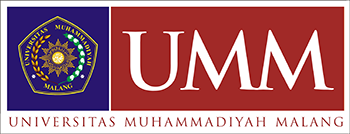Regional Government Cooperation in Keeping Brantas River Basin with Sumber Brantas Village Community, Bumiaji Sub-District, Batu City
DOI:
https://doi.org/10.22219/logos.Vol1.No1.44-55Keywords:
Spatial Planning, Conservation and Environmental Management, Brantas watershedAbstract
Awareness of Batu City residents to keep the Brantas River is still low, whereas Batu Regional Government has Regional Regulation (PERDA) No. 7 of 2011 on Spatial Planning for Year 2010-2030 and Regional Regulation No 16 Year 2011 on Protection, Conservation and Environmental Management. From the existing regulations should be enough to help the existence of forests that support the Brantas watershed, but the systematization of natural resource management is still not communicated well by the surrounding community. Lack of understanding and awareness in cooperation is a gap that makes the goal in protecting and preserving the Brantas River Basin did not materialize. The importance of growing mutual attitude among the community is needed to control the problems that occur in the Brantas River Basin. This raises the question for the researcher as stated in the formulation of the problem in this research, that is (1) How Local Government Action in effort to tackle Brantas Watershed? (2) How is the cooperation between the Regional Government and SumberBrantas Village Communities in maintaining the Brantas River? (3) How is the social life of SumberBrantas Village community in maintaining the Brantaswatershed?The type of research is descriptive qualitative research (Description Research). The research area was chosen purposively, in SumberBrantas Village, Bumiaji District, Batu City. This study uses field notes and in-depth interviews of informants namely the Local Government and the Brantas River Basin community. The data obtained will be analyzed using qualitative descriptive technique and the data is checked for validity by triangulation. The findings of the research results, the cooperation between the Government and the SumberBrantas Village Communities are still not optimal, because the community participation is still weak, this makes the problems that occur in the Brantas watershed protracted in handling. The village community of SumberBrantas is categorized as a farmer community which is known to still be thick with work together, it can be seen in the daily life of the community as well as the capital to increase people's understanding of the importance of keeping the Brantas watershed together.
Downloads
References
Ahmadi, Abu.2003. Psikologi Sosial. Jakarta: PT Raja Grafindo Persada Anonim. 19997. Strategi NasionalUntuk Pembangunan Berkelanjutan, Agenda 21 Indonesia, Kantor Menteri Negara Lingkungan Hidup Anonim. 1998. Kebijaksanaan dan Strategi Nasional Pengelolaan Lingkungan Hidup. Dalam Pembangunan Jangka Panjang Kedua (1994/1995 – 2019/2020). Kantor Menteri LingkunganHidup. Field, Jhon. 2010. Modal Sosial. Bantul: KreasiKencana Faisal, Sanapiah. 1990. PenelitianKualitatif “Dasar-dasar dan Aplikasi. Malang: YA3 Malang Fukuyama, Francis, 2002:The Great Disruption,Human Nature and The Reconstitutionsof Social Order. New York: Touchstone. Herdiansyah, Haris. 2010. Metodologi Penelitian Kualitatif untuk Ilmu-ilmu Sosial. Jakarta: Salemba Humanika Lie, Anita. 2005. Cooperative Learning. Jakarta:Grasindo Putnam, Robert The Prosperous Community, Social Capital and Public Life, Journal The American Prospec (1993) Santoso, Slamet. 1992. Dinamika Kelompok. Jakarta: BumiAksara Sugiyono. 2010. Metode Penelitian Pendidikan “Pendekatan Kuantitatif, Kulitatif dan R&D”. Bandung: Alfabeta
Downloads
Published
How to Cite
Issue
Section
License
Copyright (c) 2018 N Hodaifah, M. Masduki, Tri Sulistyangingsih

This work is licensed under a Creative Commons Attribution-ShareAlike 4.0 International License.
Authors who publish with this journal agree to the following terms:
- Authors retain copyright and grant the journal right of first publication with the work simultaneously licensed under a Creative Commons Attribution-ShareAlike 4.0 International License. that allows others to share the work with an acknowledgment of the work's authorship and initial publication in this journal.
- Authors are able to enter into separate, additional contractual arrangements for the non-exclusive distribution of the journal's published version of the work (e.g., post it to an institutional repository or publish it in a book), with an acknowledgment of its initial publication in this journal.
- Authors are permitted and encouraged to post their work online (e.g., in institutional repositories or on their website) prior to and during the submission process, as it can lead to productive exchanges, as well as earlier and greater citation of published work (See The Effect of Open Access).

This work is licensed under a Creative Commons Attribution-ShareAlike 4.0 International License.













